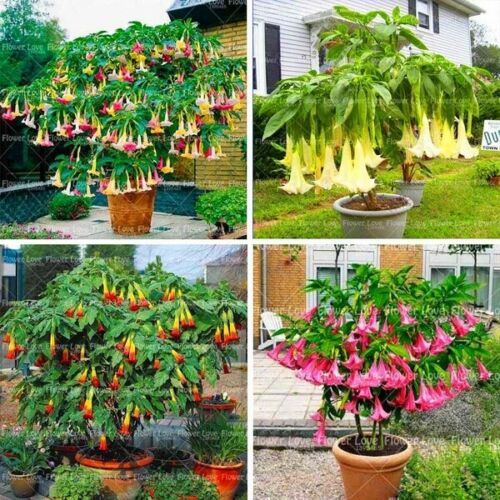MANDALA DATURA PLANT $4 PER [5] SEEDS FOR SALE ON LINE HERE OZ
Assorted colours mix. Add $4 pack/post to your order.
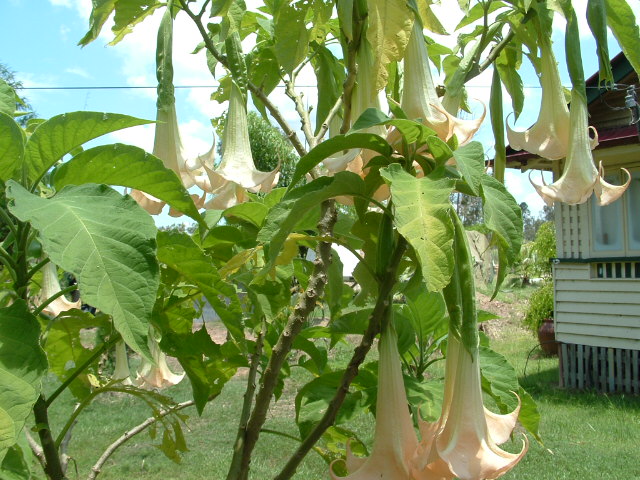
Growing angel trumpet from seed
When growing angel trumpet from seed, it’s important to start with a reliable seed source.

Seeds of both Brugmansia and Datura remain viable for many years, as long as they’re stored properly. Aside from the seeds themselves, when growing angel trumpet from seed you’ll also need a bag of high-quality seeds-starting soil, some plastic pots, a tabletop set up of grow lights (or fluorescent shop lights), an inexpensive heat mat and a piece of clear plastic large enough to cover all the pots.
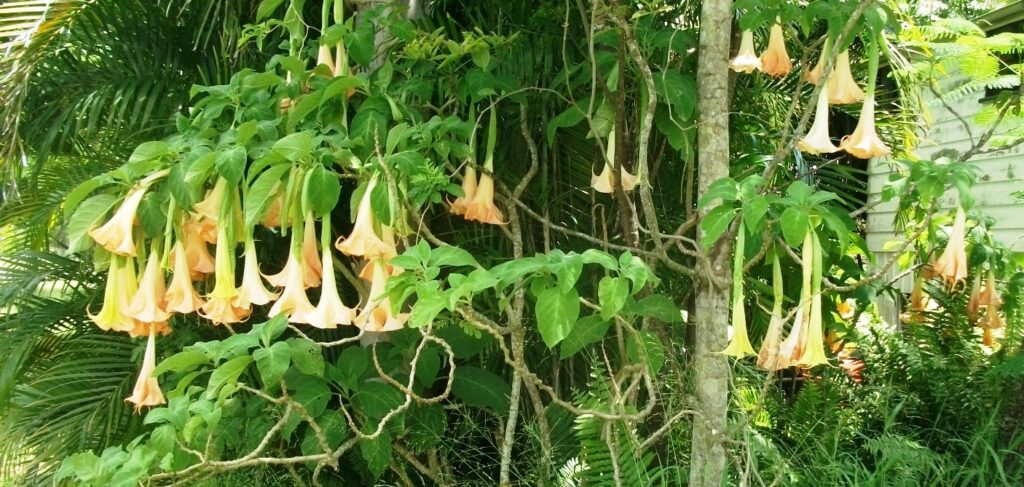
Step 1: Pre-soak the seeds. Soaking the seeds prior to planting does improve the speed of germination for both species. Soak the seeds in a cup of slightly warm water for 24 hours prior to planting.
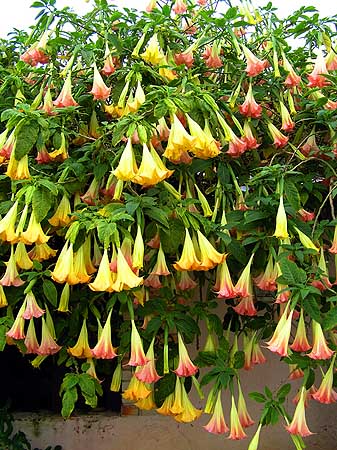
Step 2: Plant the seeds. The most critical step in growing angel trumpet from seed is to plant the seeds correctly. Angel trumpet seeds require light to germinate. If you bury them too deeply, your germination rates will be greatly reduced. After filling the pots with potting soil, simply press the pre-soaked angel trumpet seeds firmly against the soil, but don’t cover them. Water the pots immediately after planting and then cover them with a piece of clear plastic to keep the humidity high around the seeds.
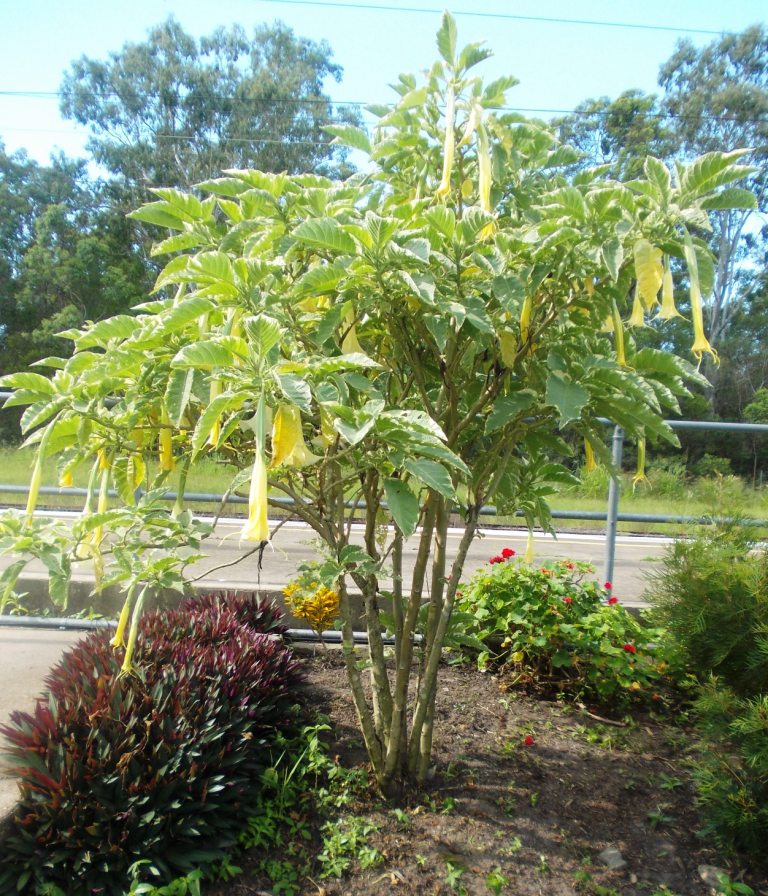
Step 3: Give them heat. Angel trumpets are tropical plants, native to South and Central America. Warm soil temperatures improve germination rates and speed. Use a seedling heat mat to warm the soil 10-20 degrees above room temperature, just enough heat to make growing angel trumpet from seed a successful endeavor. Leave the heat mat under the seed pots until the seedlings germinate, then remove it. It will take 3 to 4 weeks for angel trumpet seeds to germinate, so don’t lose patience!
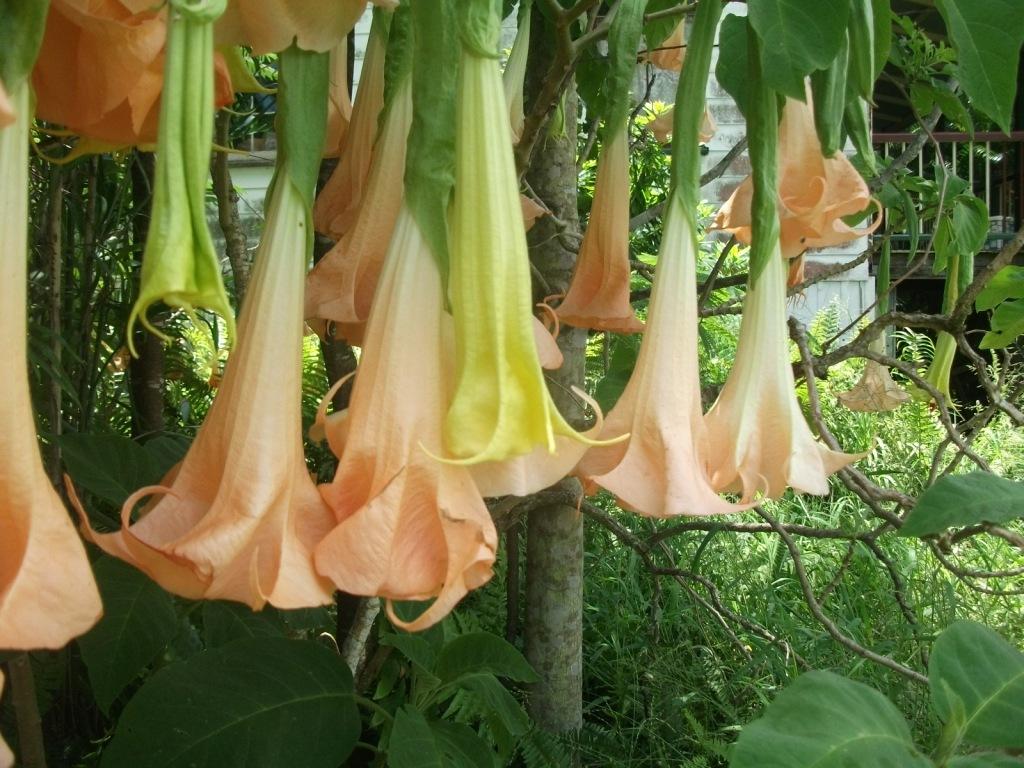
Step 4: Turn on the lights. Because both types of angel trumpet seeds need light to germinate, put the pots under grow lights or fluorescent shop lights immediately after sowing. Position the lights so they’re just 2-3 inches above the plant tops, raising them as the plants grow.
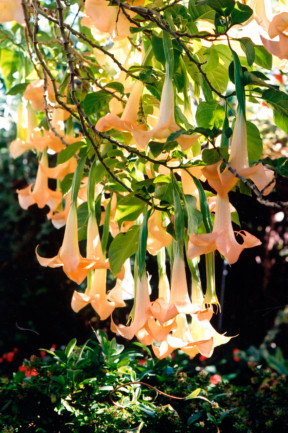
Leave the lights on for 18-20 hours per day (use a timer, if you want to automate the lights). It is possible to grow angel trumpet seeds in a sunny windowsill, but the seedlings are often leggy and pale. Highly recommend using lights, if at all possible.
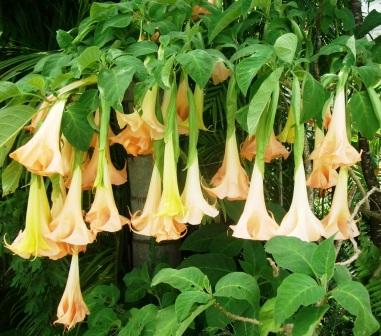
Step 5: Water as necessary. One of the most important aspects of growing angel trumpets from seed is to make sure the seeds don’t dry out prior to germination. Because they aren’t buried in the potting soil, newly planted Datura seeds can become desiccated before they even germinate. Make sure the pots stay well-watered, but don’t allow them to become water-logged either or the seeds could rot. Once the seeds have sprouted, remove the piece of plastic and the heat mat, and continue to water as necessary.
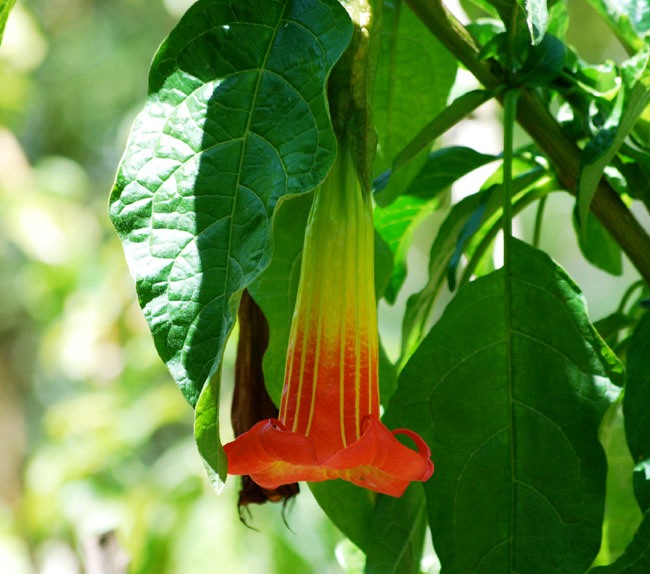
Step 6: Fertilize every two weeks. As your angel trumpet seedlings grow, fertilize them every other week with a half-strength solution of a liquid organic fertiliser. Don’t over-fertilize when growing angel trumpet from seed or you could burn the tips of the plant’s leaves.
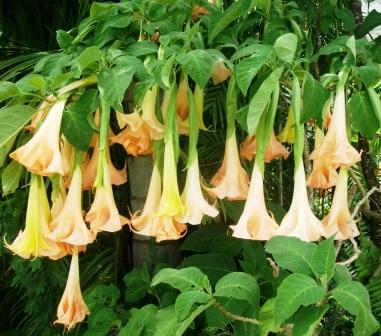
Step 7: Harden plants off before moving them outdoors. Angel trumpets are extremely sensitive to frost. Do not move them outdoors until the danger of frost as passed.
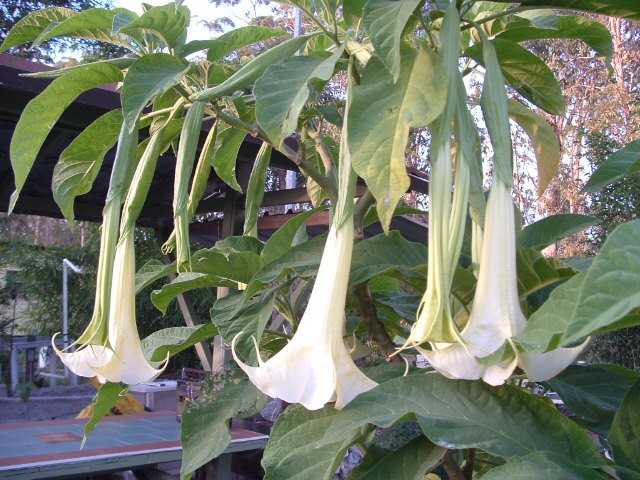
The biggest disappointment when growing angel trumpets from seed is moving them outdoors too quickly and watching them wither and die . To harden off angel trumpet plants, as soon as the danger of frost is gone, move the pots outdoors for a few hours every day and put them in a shady spot.
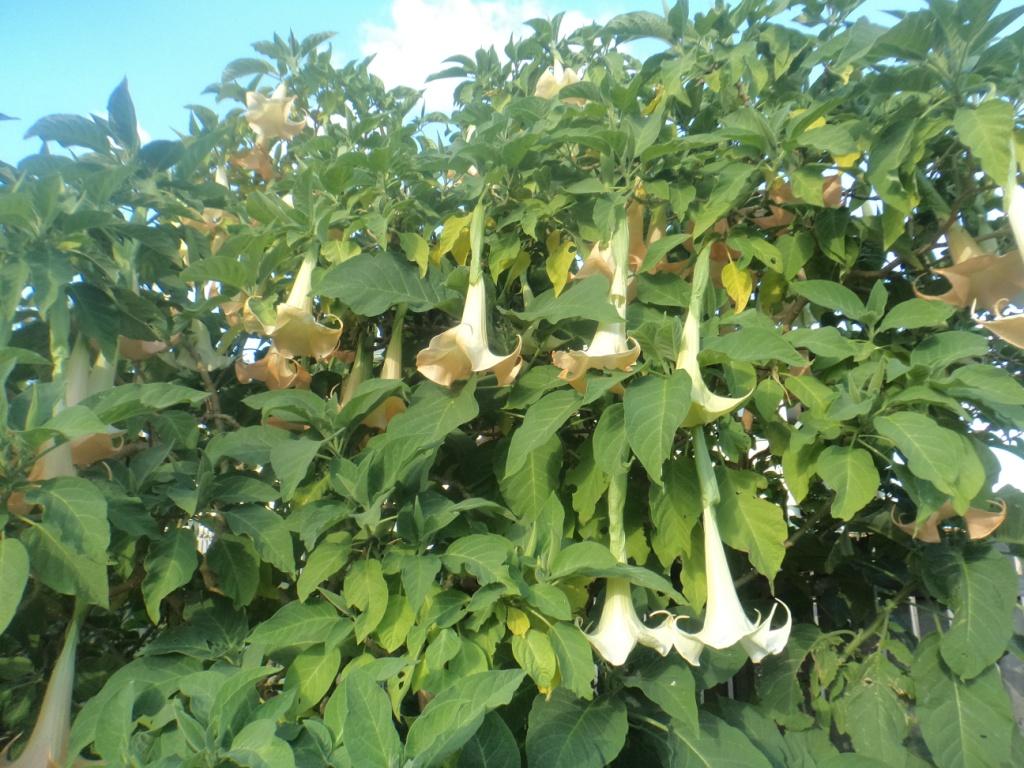
Over the course of 10-14 days, gradually increase the amount of sunlight they receive and the amount of time they spend outdoors until they’re out in full exposure both day and night.
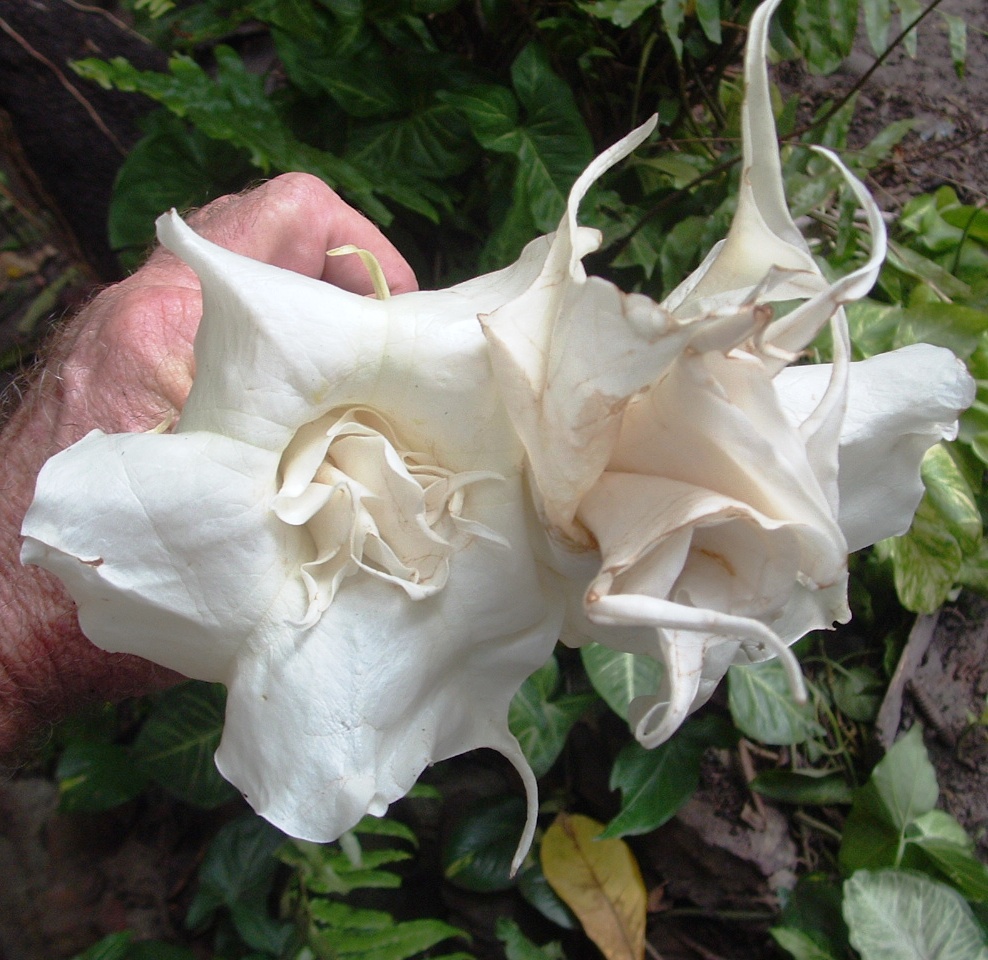
Only then are your angel trumpet plants ready to stay outdoors for the season.
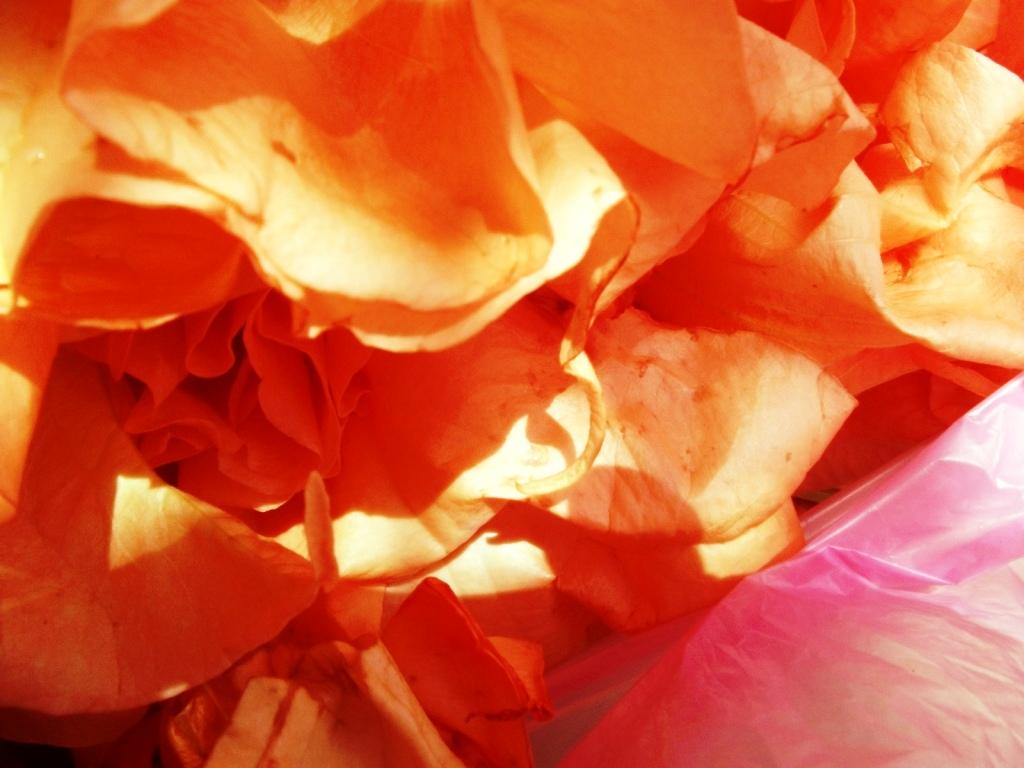
SOME HISTORY OF THE ANGELS TRUMPET DATURA PLANT & ITS USES
All over the New World, from the southwestern corner of North America, throughout Mexico as well as in Central and South America the historical and contemporary uses of the local Datura species (Datura inoxia, Datura stramonium, Datura tatula, Datura ferox, Datura ceratocaula, and Datura discolor) by the indigenous population is well documented. In South American regions Brugmansias are more common, tending to take the place of Daturas, in sacred and medicinal roles.
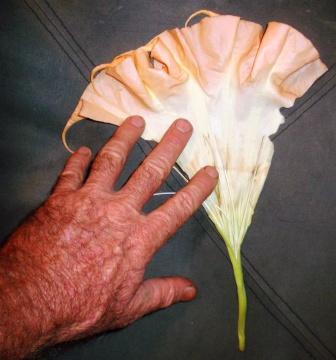
From historical accounts recorded by the Conquistadors we know that the Aztecs, who had a detailed knowledge about numerous sacred and medicinal plants, were familiar with several types of Datura species. One of these Daturas was called Toloache and is probably Datura inoxia. It was used as a painkiller in certain initiation rituals and given as a narcotic to the ritual sacrifices. For this purpose the preferred method of administration was either by enema or as a rolled-up leaf suppository which reduces some of the less pleasant side effects of the drug.
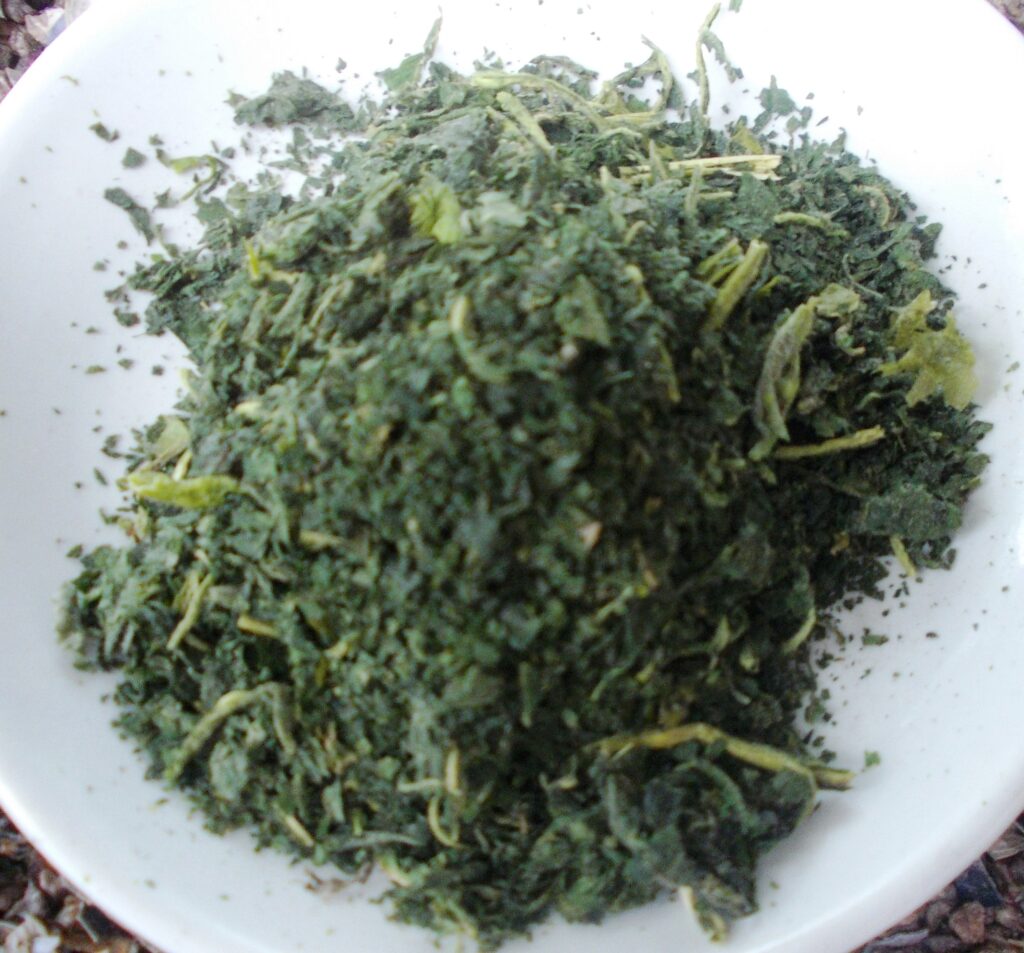
Another type of Datura (Datura ceratocaula), called Atlinan by the Aztecs, enjoyed a particularly sacred status. It was regarded as the sister of Ololuiqui, another sacred hallucinogenic plant.
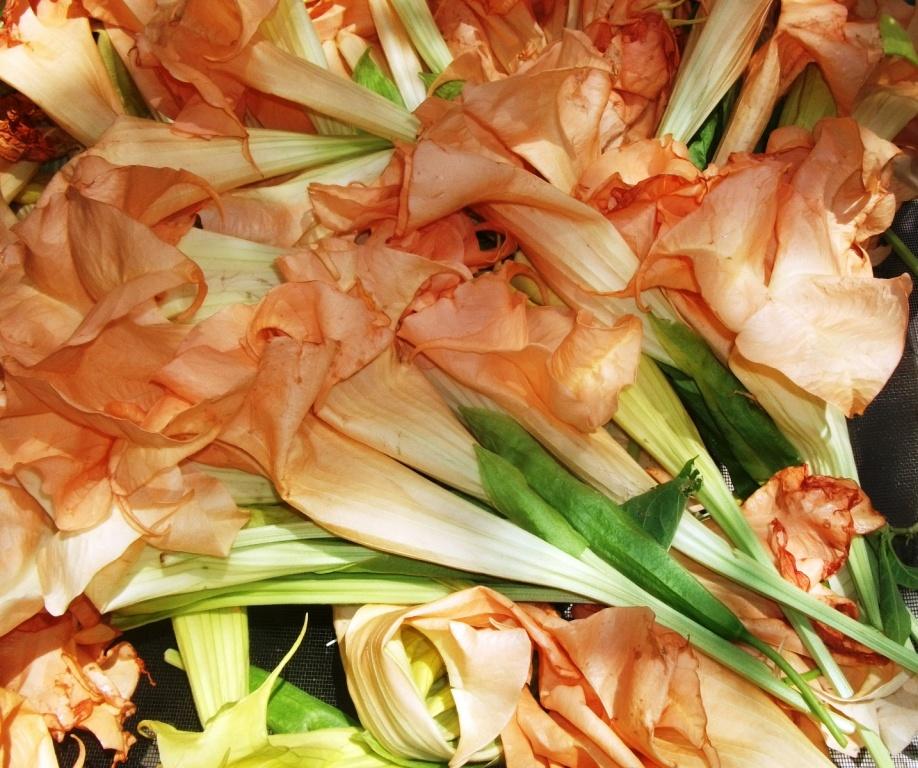
These plants were so sacred that only the priests were allowed to use them. With their help they held counsel with the Gods – divining the outcome of future events, discovering the whereabouts of lost or stolen objects and prognosticating the causes of diseases, especially if black magic was suspected. As a medicinal remedy they prepared an ointment for cracked soles and injured feet, made plasters for ulcers, pustules and infected wounds and skin sores, and used it for poultices to treat rheumatic aches and pains.
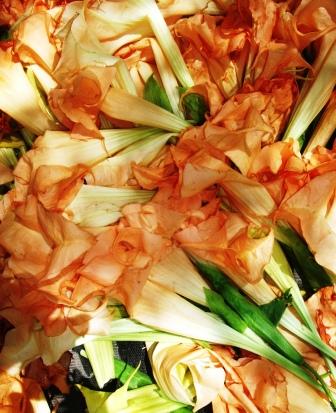
In many areas of South America various Brugmansia species are cultivated and used in much the same way as Datura species are elsewhere. To this day the ground seeds are mixed into the Chicha, the sacramental corn beer (Zea mays) found everywhere on that continent. The combination of Datura seeds and alcoholic drinks appears to be a global phenomena.
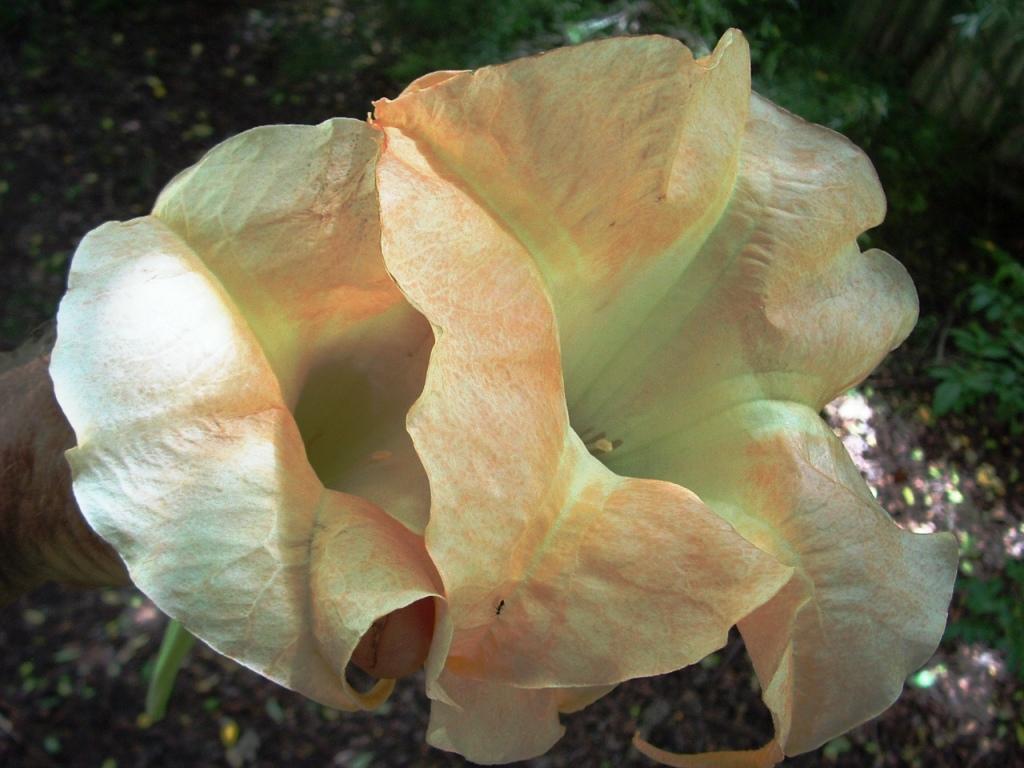
It is a documented practice amongst all kinds of unrelated tribes throughout the Americas, was practiced in China (mixed with wine), and even became popular in Europe during the Middle Ages (mixed into beer). Whilst in the New World the beverage was generally used within a ritual context, in the Old World the brews were generally consumed for more recreational purposes.
BE WARNED THIS IS A DANGEROUS DRUG PLANT-DO NOT EXPERIMENT
Cuttings & plants are available in some colours. ASK …. Henry
Any questions or if buying, contact me HERE


